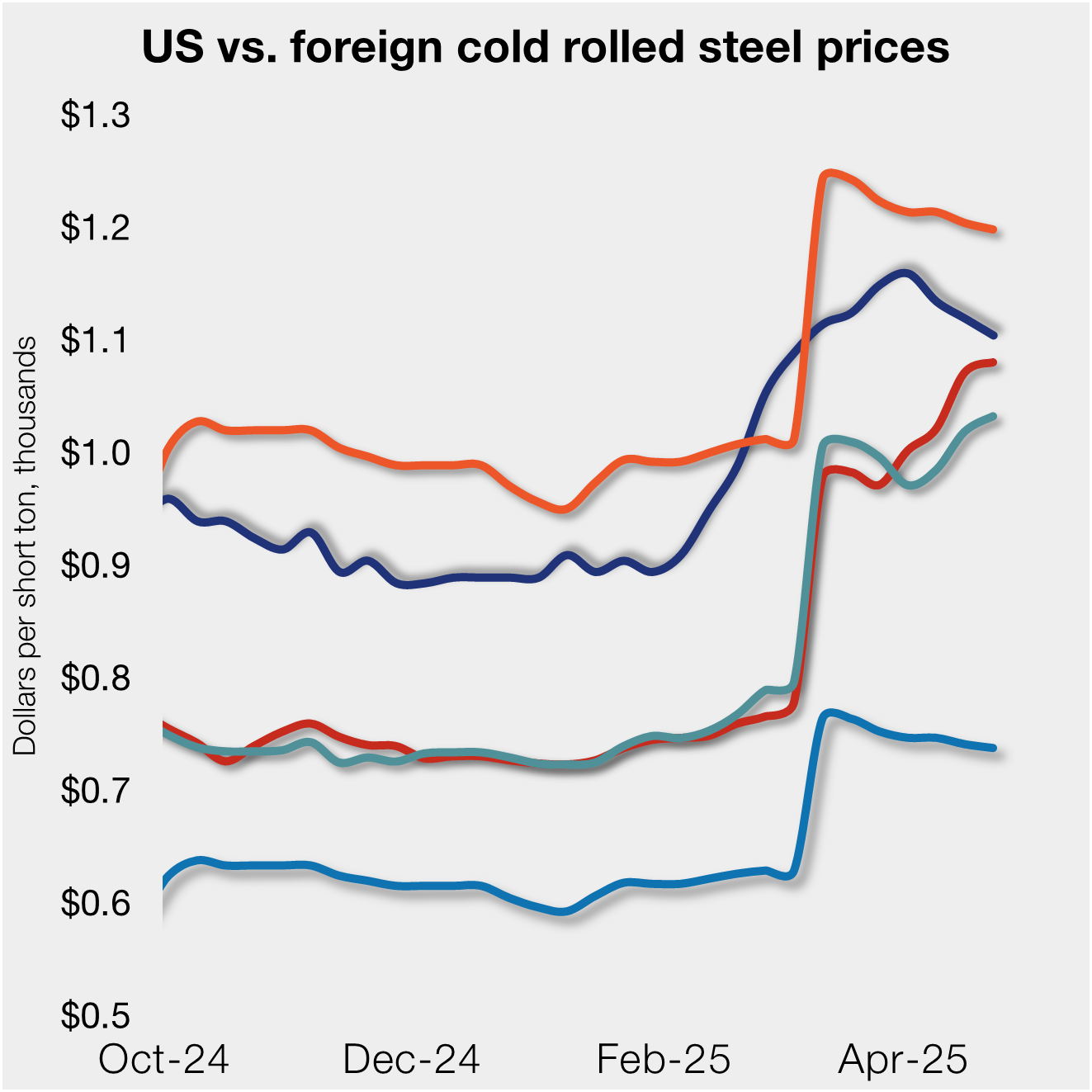Steel Products
Construction Input Costs Jump in March
Written by Sandy Williams
April 10, 2018
Construction costs climbed in March on a wide range of building materials, according to an analysis of Labor Department data by the Associated General Contractors of America. The producer price index for input goods to the construction industry rose at its steepest year-over-year rate since 2011. The goods index climbed 0.8 percent in March alone and 5.8 percent over 12 months. The index is a measure of all materials used in construction projects including items consumed by contractors, such as diesel fuel.
“Prices increased for many items in March, even before tariffs announced for steel, aluminum and many items imported from China have taken effect,” said the association’s chief economist, Ken Simonson. “Steel service centers and other suppliers are warning there is not enough capacity at U.S. mills or in the trucking industry to deliver orders on a timely basis. Thus, contractors are likely to experience still higher prices, as well as delivery delays, in coming months.”
From March 2017 to March 2018, the producer price index jumped by 13.7 percent for lumber and plywood, 11.4 percent for aluminum mill shapes, and 4.9 percent for steel mill products. The U.S. has been in a dispute with Canada over lumber imports, has imposed tariffs on several types of steel and has announced or recently imposed additional tariffs—not reflected in the March price index—on steel, aluminum and numerous Chinese construction products.
Other construction inputs that rose sharply in price from March 2017 to March 2018 include diesel fuel, 39.7 percent; copper and brass mill shapes, 11.2 percent; gypsum products, 8.4 percent; and plastic construction products, 5.8 percent. In addition, concrete and other suppliers announced significant price hikes that were due to take effect in April.
“Tariffs will harm contractors that are currently working on projects for which they have not bought materials and will disrupt budgets for future construction,” said Stephen E. Sandherr, the association’s chief executive officer. “The best way to help the U.S. steel and aluminum sector is to continue pushing measures, like regulatory reform and new infrastructure funding, that will boost demand for their products as the economy expands.”

Sandy Williams
Read more from Sandy WilliamsLatest in Steel Products

US rig count up, Canada declines
Oil and gas drilling activity was mixed this week, according to Baker Hughes. US rig counts expanded for a second straight week, while Canadian activity continued its seasonal slowdown of eight consecutive weeks.

US, offshore CRC prices continue to diverge
US cold-rolled (CR) coil prices declined again this week, slipping for a third straight week. Most offshore markets did the opposite, moving higher this week.

S232 lifts EU HR price over US, Asian HR still well behind
Domestic hot-rolled coil prices were flat this week after dropping for four straight weeks. Most offshore markets bucked the trend and gained ground.

SMU Steel Demand Index dips into contraction
SMU’s Steel Demand Index has moved into contraction, according to late April indicators. The slowdown comes in response to growing tariff uncertainty after the index reached a four-year high in late February.

Nucor selects Fives Group for new galv line at CSI
Nucor Corp. has tapped Fives Group as its partner in designing and manufacturing the new continuous galvanizing line being added at its California Steel Industries (CSI) joint venture in Fontana, Calif.
